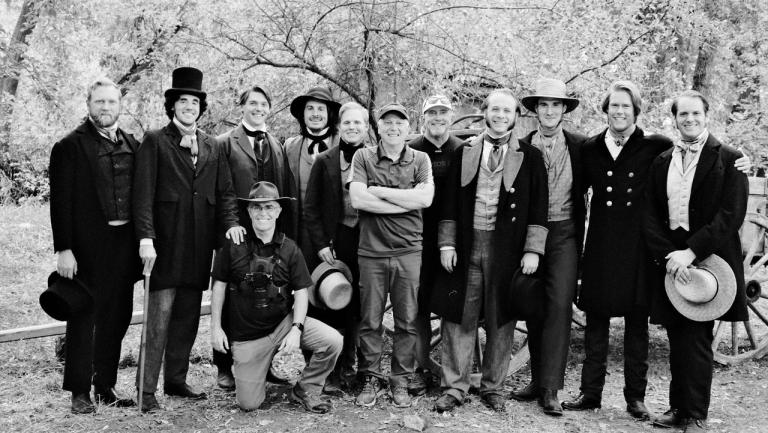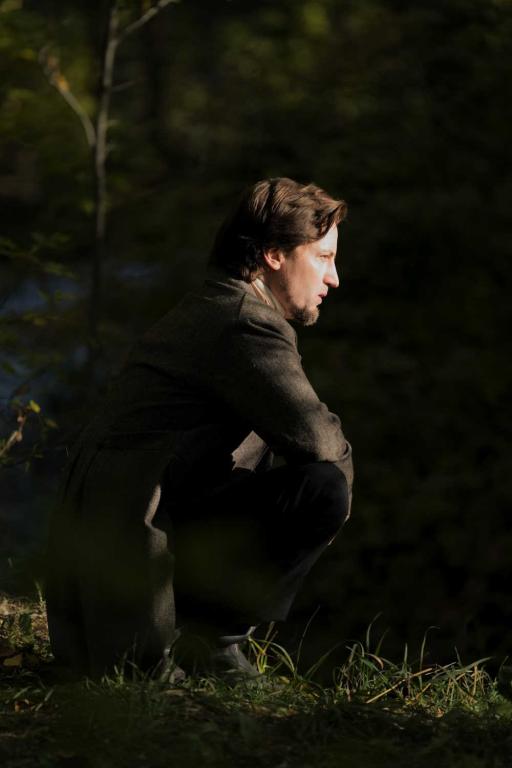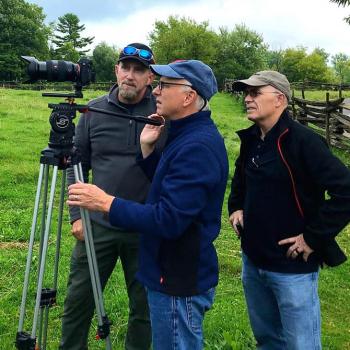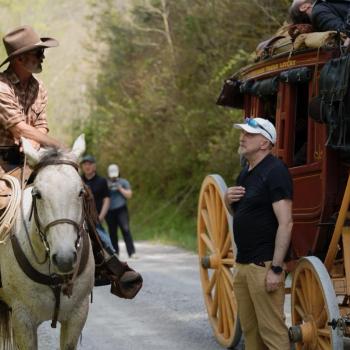
Well, we’re back. For a little while. (Fairly soon, we plan to be off for visits with far-flung members of our family both at home and abroad. This additional travel will drive my most obsessive critics berserk with rage, of course, but, candidly, I value my family more than I value the opinions of those critics.) And a major part of my obligation as the president of the Interpreter Foundation and as an executive producer of the film project Six Days in August is to raise money — especially during the enormously important fundraising months of November and December. Moreover, and particularly with regard to Six Days in August, we still have a significant mountain to climb. So I apologize in advance for the fact that, from time to time over the next couple of months, I’m going to be raising the issue of, well, money. I dislike asking people for money, but I love the projects that we’ve undertaken. And they cost money. So that’s how it goes.
If any of you have any questions about our fundraising needs for Six Days in August or for the Interpreter Foundation more generally, please contact me at [email protected]. (I don’t reliably or regularly use Facebook Messenger.)
And please don’t forget about our much more modest (but still needy) film project Not by Bread Alone: Stories of the Saints in Africa. We are hoping to have it ready by the time that the Lubumbashi Democratic Republic of the Congo Temple is dedicated. It will be produced in both French and English, with an African audience very much in mind.

In the meantime, speaking of the Interpreter Foundation, here are some newly appeared items that I need to mention to you:
“Degrees of Glory: A Brief History of Heaven and Graded Salvation,” written by Jim Hansen
Abstract: While references to heaven in the Old Testament are sparse, non-explicit, and predominantly cosmological, the New Testament reveals a more complex concept of the afterlife that reflects a rapidly evolving understanding of Heaven. The Jewish apocalyptic literature of the late Second Temple period describes a heaven of multiple degrees that is populated with angels and the righteous dead of varying glories. Those glories also tangibly reflect astral qualities of light and glory comparable to the sun, moon, and stars. Within this worldview of Heaven, several of the Apostle Paul’s writings to Corinth can be read with added insight, including his ascent to the “third heaven.” Paul’s teachings of resurrected bodies assuming astral qualities may reflect the native Corinthians’ metaphysical views of the body and soul, which Paul may have shared himself. While Western Christianity would embrace degrees of glory through the Middle Ages, Reform Theology of the Protestant Reformation would affirm a concept of Heaven that supported only a single habitation. It would take a Restoration-era vision to Joseph Smith to restore the doctrine of degrees of glory original to the Jews and early Christians but lost to those of the modern era.
“Interpreting Interpreter: A History of Degrees,” written by Kyler Rasmussen
This post is a summary of the article “Degrees of Glory: A Brief History of Heaven and Graded Salvation” by Jim Hansen in Volume 59 of Interpreter: A Journal of Latter-day Saint Faith and Scholarship. All of the articles may be seen at https://interpreterfoundation.org/category/summaries/. An introduction to the Interpreting Interpreter series is available at https://interpreterfoundation.org/interpreting-interpreter-on-abstracting-thought/.
The Takeaway: Hansen reviews historical conceptions of heaven, placing the Restoration’s view of the three degrees of glory in the context of a graded understanding of heaven that took shape in the centuries before Christ.
“The Temple: Ancient and Restored: “Let the Beauty of the Lord Our God Be upon Us”: The Importance of an Aesthetic in the Ritualized Visualizations of the Israelite Cult,” delivered by Daniel L. Belnap
Part of the Interpreter Foundation’s book chapter reprint series, this article originally appeared in The Temple: Ancient and Restored, Proceedings of the Second Interpreter Matthew B. Brown Memorial Conference “The Temple on Mount Zion,” 25 October 2014 (2016) edited by Stephen D. Ricks and Donald W. Parry. For more information, go to https://interpreterfoundation.org/books/the-temple-ancient-and-restored/.
Conference Talks: Wiraqocha and the Rites of the Raqchi Temple in Peru, delivered by Van C. Evans
When the Spaniards arrived on Peruvian shores in 1532, they were mistaken for Wiraqocha, a bearded white god who had sojourned among them in ancient times. This god had travelled through the Andes on a perfect 45 degree angle of the north-south axis of the planet. They called it the Holy Path, and the ancient Andeans built temples to worship him in each of the settlements he visited along the path. In these temples they performed sacrifices, initiation, and endowment ordinances. Some of these are still performed today in their sacred vestments, including their signs and tokens. First presented on Saturday, 7 November 2020, at the Interpreter Foundation’s 2020 Temple on Mount Zion Conference.

And, finally, here is yet another quartet of stomach-turning horrors from the Christopher Hitchens Memorial “How Religion Poisons Everything” File™:
“BYU study examines how religious faith bolsters family hope and unity”













